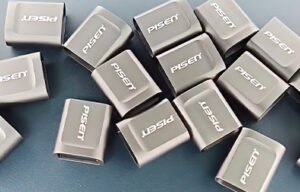Coaxial Vision in Laser Welding Machines: Defect Detection & Closed-Loop Control
1. Why Use Coaxial Vision Monitoring?
In applications such as new energy batteries, precision electronics, automotive body panels, and medical devices, laser welding machines and laser marking machines must ensure stable penetration, minimal heat-affected zones, and process consistency.
Traditional post-process inspection cannot cover process fluctuations, potentially causing batch defects.
Coaxial vision monitoring enables real-time defect detection and adaptive parameter adjustment during processing, forming a closed-loop quality control.
2. Working Principle of Coaxial Vision
Coaxial vision aligns the imaging optical path with the laser path, capturing signals from the melt pool, plasma, or marking area via beam splitters.
Advantages: observation angle aligns with laser, minimal occlusion, high alignment precision.
Limitations include reflective materials, smoke/spatter contamination, small focus resolution, and motion blur at high speed.
Mitigation: short-exposure cameras, narrow-band filters, shielding gas, and inline lens cleaning.
3. System Architecture and Hardware Selection
A complete system typically includes:
Laser Source and Optical Path
Fiber laser, scanning galvanometer or fixture, beam splitter, narrow-band filter, protective lens, coaxial illumination.Sensors
High-speed industrial camera captures melt pool or marking images; photodiodes and pyrometers optional.Computing and Edge Deployment
Industrial PC or embedded edge computing processes images, defect detection, and control computation.Control Interface
Real-time communication with laser power, pulse width, frequency, scanning, and wire feed.Software Platform
Task scheduling, parameter templates, model updates, data logging, and traceable reports.Key Considerations
Camera frame rate, dynamic range, lens FOV, filter wavelength, edge computing capability.
4. Typical Online-Detectable Defects
Typical defects in laser welding machines:
Lack of penetration: Abnormal melt pool length-to-width ratio.
Porosity: Surface depressions or high-frequency flickering.
Edge bite: Discontinuous melt pool edges.
Misalignment: Melt pool center offset.
Spatter: Sudden increase in bright spots.
Cracking signs: Dark bands or forked patterns in solidified tail.
Features are measured via image geometry, texture statistics, and multi-sensor fusion.
5. Algorithmic Approaches for Online Defect Detection
Rule-based Thresholding
Traditional Machine Vision
Deep Learning Recognition
Multi-modal Fusion
Real-time Deployment
Confidence and Temporal Tracking
Each approach is selected based on frame rate, latency, and small-sample training requirements.
6. Adaptive Closed-Loop Control Strategies
Objective: Stabilize melt pool area and aspect ratio, ensure keyhole stability, minimize spatter.
Adjustable Parameters: Laser power, scanning speed, swing amplitude, pulse duty cycle, wire feed speed.
Control Strategy: Rule compensation, PID/feedforward, model predictive control.
Safety Limits: Parameter upper/lower bounds, rate limits, fallback mechanism.
Human-Machine Collaboration: Adjustable target window and sensitivity, transparent closed-loop actions.
7. Implementation Steps
Requirement Clarification
Prototype Deployment
Key Indicator Modeling
Rule-based Detection Online
Model Deployment
Closed-loop Operation
Acceptance & Documentation
8. Calibration and Data Governance
Calibration: Pixel scale, optical axis alignment, exposure baseline
Data Governance: Naming conventions, labels, version traceability
Model Maintenance: Playback data, evaluate precision and recall, trigger retraining
9. Integration with Production Line and Quality System
Communication: Fieldbus or Ethernet, millisecond-level latency
MES Traceability: Quality fingerprint for each weld or mark
Quality Rules: Defect detection results trigger automatic stop, rework, or release strategies
10. Conclusion
Coaxial vision and adaptive closed-loop control upgrade laser welding and laser marking to data-driven processes.
It is recommended to implement rule-based detection first, then introduce lightweight models and multi-parameter closed-loop control to gradually expand material coverage.
111-1024x458.png)


